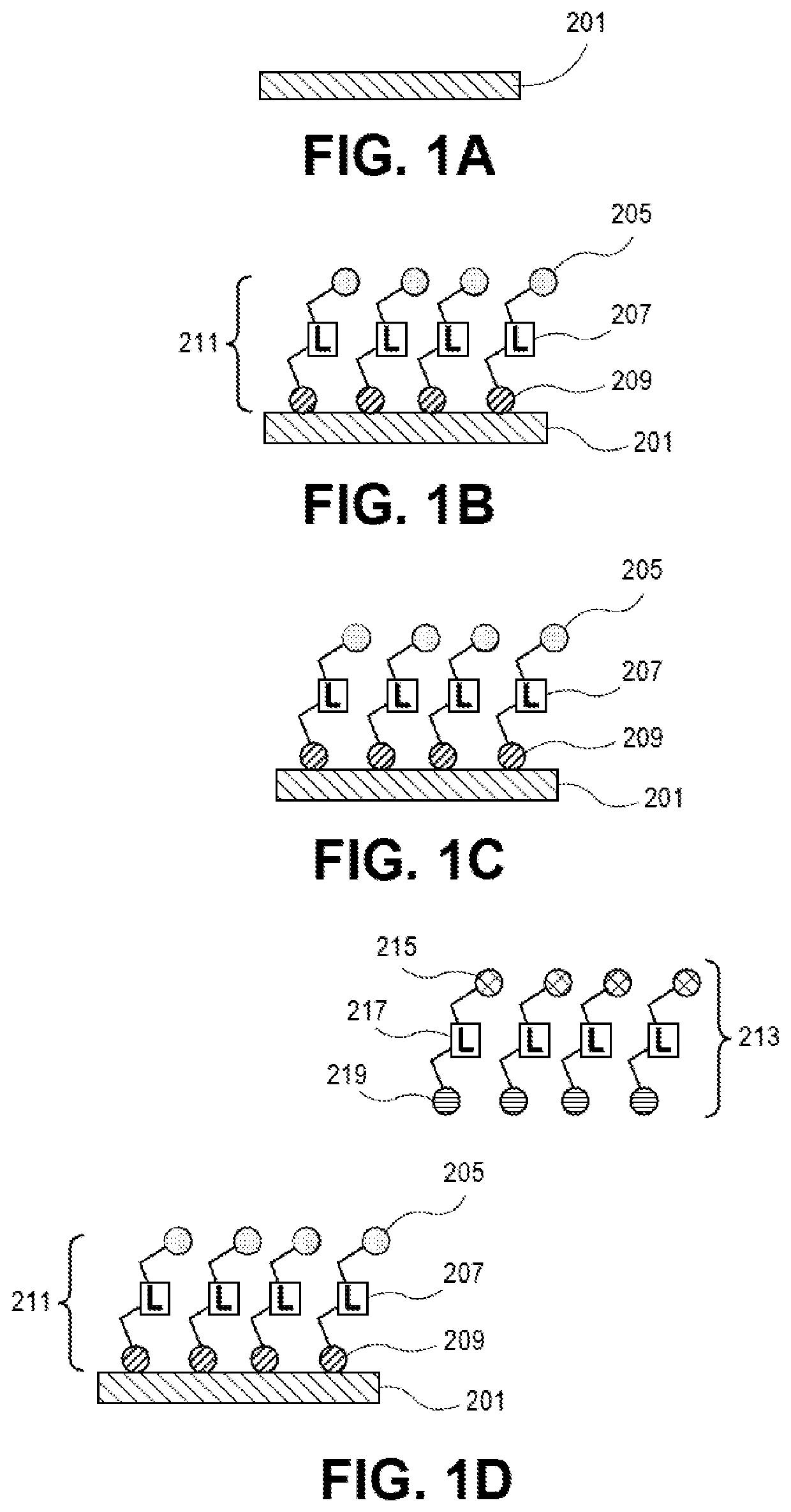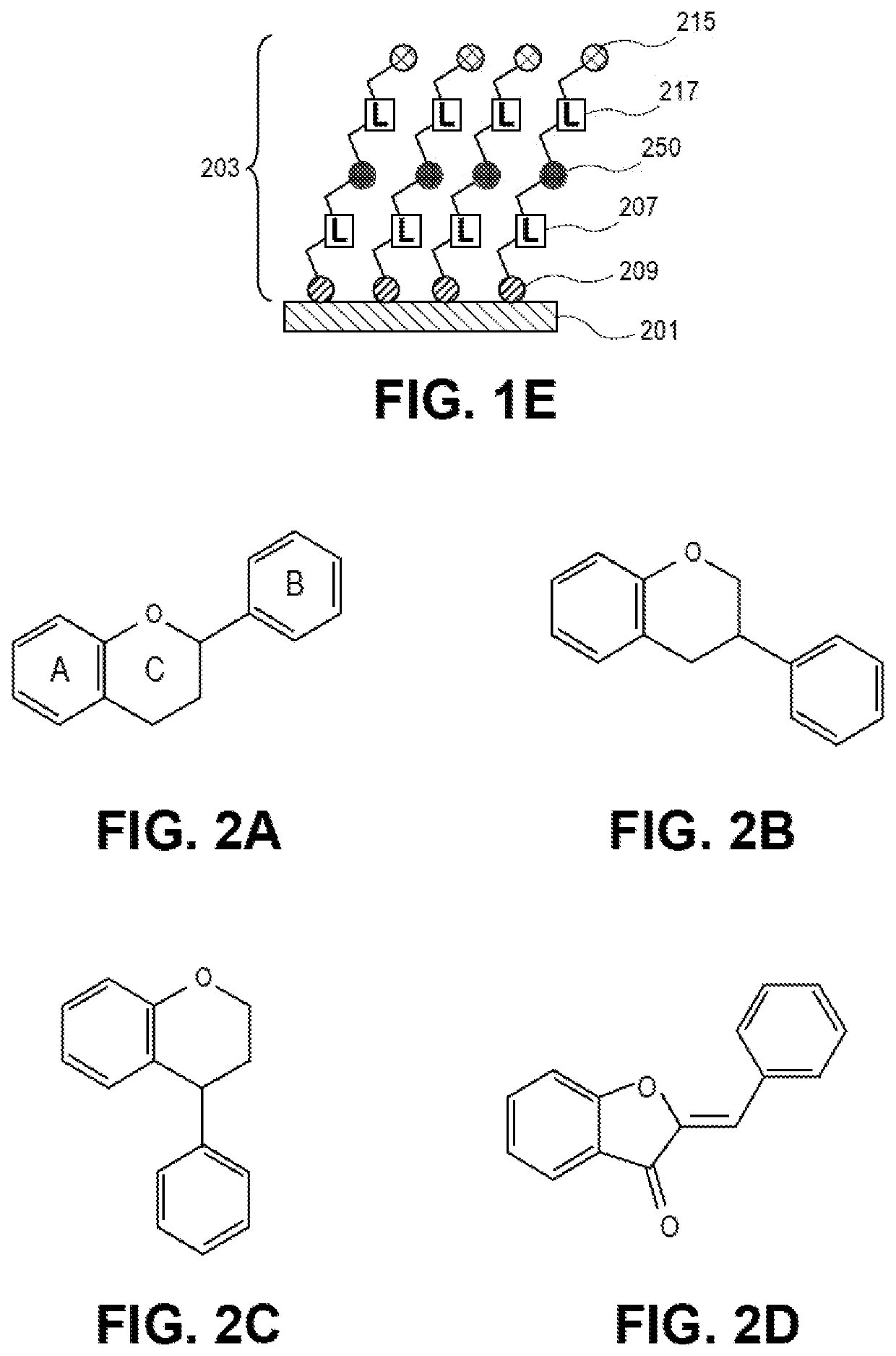Interfacial layer for high resolution lithography (HRL) and high speed input/output (IO or I/O) architectures
a high-resolution lithography and interfacial layer technology, applied in the direction of photomechanical equipment, insulating substrate metal adhesion improvement, instruments, etc., can solve the problems of unwanted surface reflection of the hieb, the creation of unwanted surface reflection off one or more layers exposed to a beam of electrons, and the pressure to reduce the fls
- Summary
- Abstract
- Description
- Claims
- Application Information
AI Technical Summary
Benefits of technology
Problems solved by technology
Method used
Image
Examples
Embodiment Construction
[0019]Embodiments described herein provide techniques for forming an interfacial layer on a metal layer to assist with improving adhesion of a resist layer to the metal layer and with improving use of one or more lithography techniques (e.g., an HRL, any other lithography technique known in the art, any combination of lithography techniques known in the art, etc.) to fabricate interconnects and / or features using the resist and metal layers for a package substrate, a semiconductor package, or a PCB. For one embodiment, the interfacial layer includes, but is not limited to, an organic interfacial layer. Examples of organic interfacial layers include, but are not limited to, self-assembled monolayers (SAMs), constructs and / or variations of SAMs, organic adhesion promotor moieties, and non-adhesion promoter moieties. The interfacial layer can be in film form and / or any other suitable form known in the art. For one embodiment, when the interfacial layer comprises an SAM, the SAM is forme...
PUM
| Property | Measurement | Unit |
|---|---|---|
| wavelengths | aaaaa | aaaaa |
| wavelengths | aaaaa | aaaaa |
| wavelengths | aaaaa | aaaaa |
Abstract
Description
Claims
Application Information
 Login to View More
Login to View More - R&D
- Intellectual Property
- Life Sciences
- Materials
- Tech Scout
- Unparalleled Data Quality
- Higher Quality Content
- 60% Fewer Hallucinations
Browse by: Latest US Patents, China's latest patents, Technical Efficacy Thesaurus, Application Domain, Technology Topic, Popular Technical Reports.
© 2025 PatSnap. All rights reserved.Legal|Privacy policy|Modern Slavery Act Transparency Statement|Sitemap|About US| Contact US: help@patsnap.com



